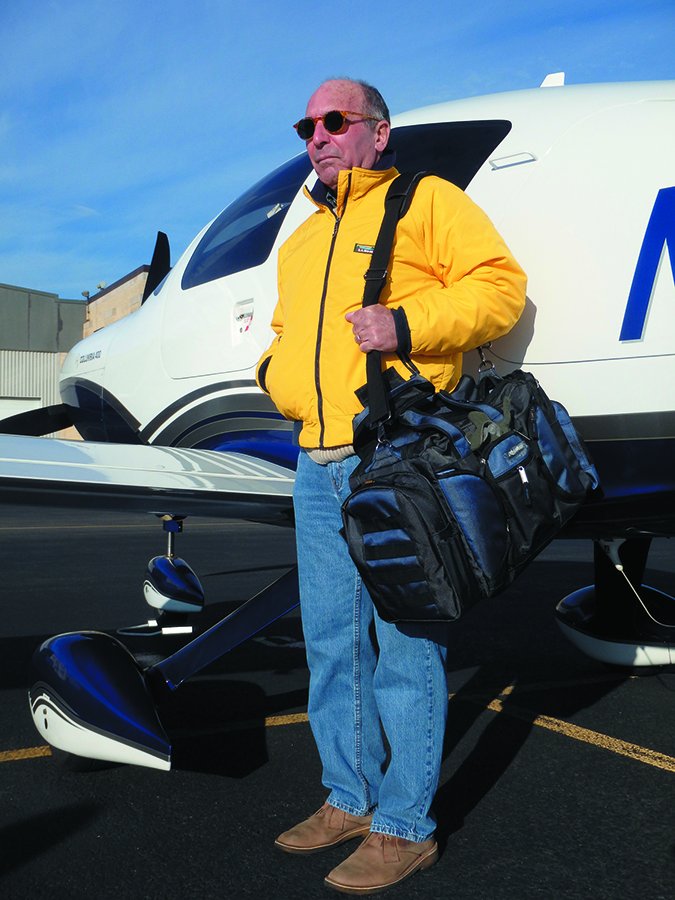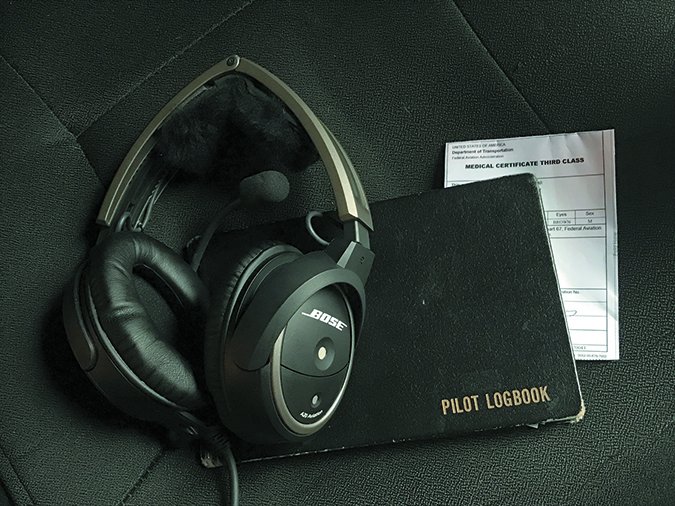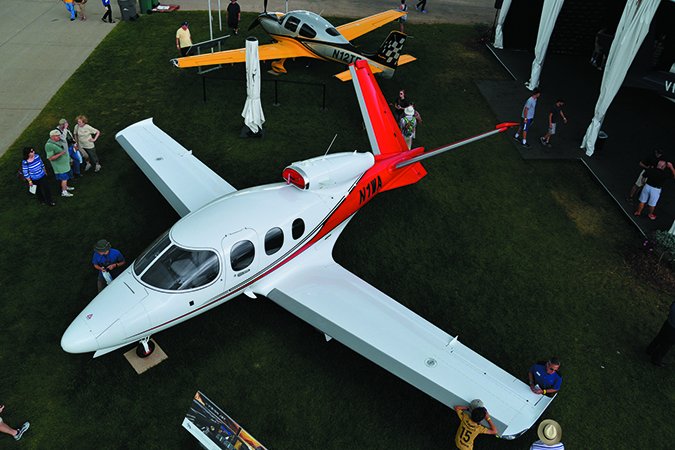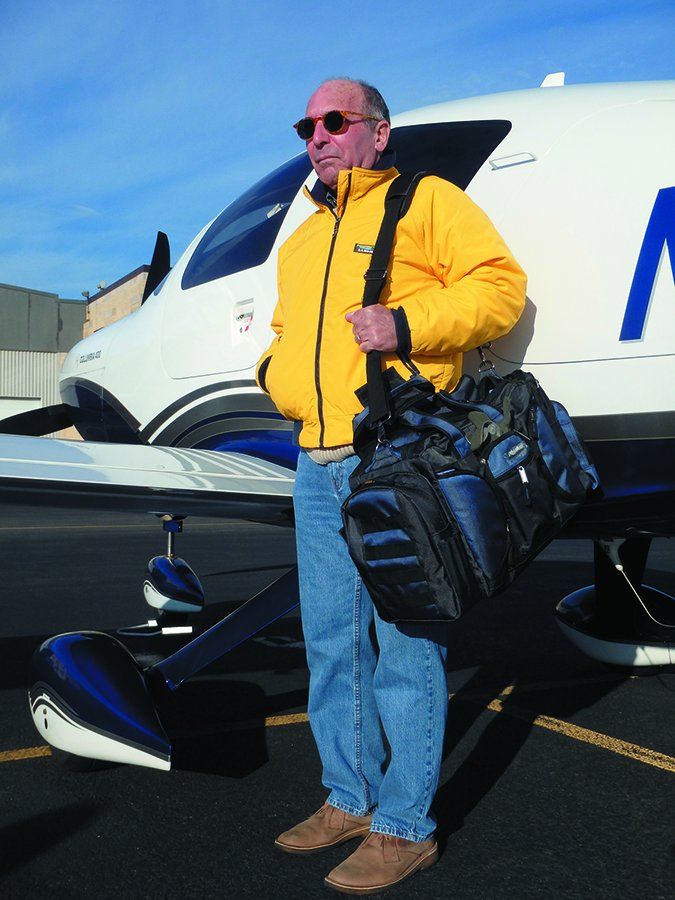Insurance Tips for Aging Pilots
– Fly often. Underwriters know that rust means more risk.
– Be realistic when it comes to upgrading to advanced aircraft.
– Don’t jump from insurer to insurer. Loyalty counts.
– Take an aggressive approach to training.
– Complete an IPC even if you don’t need it for your missions.
– Consider a simpler aircraft with lower liability limits.
– Old age and multiple wrecks isn’t a favorable combination.
When we last looked at insurance for older pilots, the insurance market was in the midst of a soft market cycle, or at least we thought it was. Almost four years later, there are even more insurers than there were then.
As the GA fleet in the U.S. continues to gradually shrink, there are more insurance dollars chasing fewer airplanes. As a result, rates and underwriting guidelines are even softer now than they were then.
Still, there are specific things aviation underwriters look at when considering a policy for aging pilots. Here’s how you might convince them that you’re good to go.
Are You A Good Fit?
Now, as then, the primary factor that aviation underwriters look at when offering a policy is the fit between the pilot and aircraft. How we’ll is this pilot equipped to fly this type of aircraft, given his or her experience and training?
If the pilot is making a transition and is not particularly we’ll equipped, what sort of training can make him or her proficient and safe, and how can it be provided? What steps can be taken to measure its positive effects? The age thing isn’t easy to quantify.

When looking at older pilots, underwriters are at a little bit of a loss. There is very little literature or research that is aimed directly at older general aviation pilots. What research has been done in this area is aimed primarily at air carrier pilots who by law max out at 65, and tells us little about the septuagenarians and even octogenarians who are becoming more common in general aviation. The available evidence is confusing and even contradictory. Many of the studies that are based on accident analysis include only NTSB-reportable occurrences, which are only a fraction of all aircraft insurance claims. And how do we tell whether a gear-up landing is just an “oops” or is caused by age-related factors?
Some of the research concludes that older, more experienced pilots perform certain tasks better than younger pilots with less experience. How much more experience? Perform how much better? Which tasks? It’s hard to put a number on it. And putting numbers on things is what underwriters are paid to do, so most of them are left with whatever overall accident statistics are available and the experience their own company has with pilots of different types of airplanes and of varying ages. And since pilots age very differently—and the underwriter rarely gets to meet them—how can he make any kind of accurate judgment about who to offer insurance to, and how much to charge for it?
Partly because of all of this vagueness, the topic of insurance and older pilots continues to be a very sensitive one. As in our prior surveys of older pilots and insurance, we spoke with aviation underwriters and brokers to learn more about the subject. Once again, nobody wanted to speak for attribution, but we did get plenty of feedback.
For an underwriter sitting at a desk in Atlanta, Los Angeles or New York, it is difficult to evaluate an aging pilot. As one insurer put it, “How do you know if you are writing the 60-year-old 80-year-old, or the 80-year-old 60-year-old?” A little birthdate subtraction would eliminate one of the options, but we take his point: People age at different rates. Some lag behind their chronological age, and some are way ahead of it.
Since underwriters don’t get to fly with each of these pilots and see how they perform firsthand, what clues do they have to help them make decisions? There turns out to be more clues than you might think.
Age Equals Judgement?

That may be true, but is it cancelled out with declining situational awareness and reaction time? The really low-hanging fruit is accident history. Almost every company did tell us that they experienced a slightly higher accident rate among their senior pilot customers. As a result, a 75-year-old pilot with two gear-up landings in the last three years, or who ran one tank dry and made an off-field landing with 40 gallons in the other side, is probably not a good bet.
Another easy one is a pilot’s total flight time. Most of the research points to slower declines in areas of learning that took place earlier in life, and areas that have been practiced countless times over the years. You want to insure the 20,000-hour 70-year-old pilot more than the 500-hour 70-year-old pilot. And in fact, some of the science shows what most of us know: that you are probably better off insuring the older pilot with more experience. The more experienced pilot uses his superior judgment in order to avoid having to demonstrate his superior flying skills.
Two areas of human thinking that researchers say suffer the most and the soonest from aging are working memory and reaction time. Working memory is defined in different ways, but we use it here to mean the part of transient memory used to temporarily store and manipulate information, like reading back an approach clearance.
Another clue that underwriters look at is how much time a pilot has in the same type of airplane in which he or she is looking to be insured.
Some aging pilots can easily tackle the challenge of a different airplane with lots of new features and complex systems, but many cannot. One underwriter said that while his company insures many older pilots, they tend to avoid older pilots who were making transitions, especially large transitions. The required learning of new systems may be a challenge and insurers know it.
A victim of aging is our ability to learn new things. As with all things that change as we age, that ability varies greatly from person to person. We can deal quite proficiently with what we know and what we are used to, but new/different often throws us as we age. “We’re not really interested in an older pilot who is jumping into, say, his first turbine. If he has been flying the same type or something quite similar, we probably won’t have an issue,” one insurer told us.
Recent and focused training counts for something. As one underwriter put it, “If a pilot just got back from an IFR refresher in a simulator and did OK, he probably is still OK himself. The folks who are still training without us forcing them to are the ones that I want.”

Underwriters also look at what kind of airplane their older customer is flying and the amount of liability coverage he carries. Bear in mind that the insurer has in effect promised to pay for the airplane, and the limit of liability, if things go really badly. Underwriters treat this as very real money. So the older pilot in a Cessna 182 insured for $60,000 who carries $1 million of liability coverage limited to $100,000 per passenger causes an underwriter much less concern that the older pilot flying a TBM850, as one example, worth $3 million and toting liability limits of $5 million.
And the one thing that every single insurer mentioned when reviewing his aging clients and client candidates was how much flying the pilot was doing each year.
“Depends a little on the airplane, but we’re looking hard at currency. The pilot who is flying 100 hours a year, getting periodic training and proficiency checks, plus maybe doing a WINGS phase is a pretty good bet.” We heard similar sentiments from almost every underwriter we spoke with. They are looking for currency.
So How Old is Old?
There seems to be a variety of opinions among underwriters about just what “old” is. Most told us that they really started to pay attention when pilots reach 70, which is unchanged from our last look at this market.
“At 70, a lot of people begin to have noticeable changes in all the faculties that we need to be pilots,” was the way one underwriting manager put it. Another said, “Somewhere around 70 is where we look at what kind of airplane he or she is flying and what kind of liability limits we are providing.”
One of the old standbys that underwriters have relied upon in the past to give them some reassurance about the physical fitness of their clients is to require additional FAA medical exams. This is one more piece of evidence that they can put in the files. The annual FAA medical including EKG has been a favorite for years. In some cases, underwriters will accept a doctor’s letter following a regular annual exam.
Unfortunately, mere issuance of a medical certificate does not provide the underwriter with much information about either gradual deterioration of the pilot’s skills, nor does it provide much ability to predict sudden medical incapacitation. See the sidebar on page 14 about how underwriters are reacting to the FAA’s BasicMed certification reform. Under BasicMed, pilots (regardless of age) are eligible if they have a driver’s license and if they have held a valid FAA medical certificate that expired within the past 10 years. This also includes a special issuance medical, provided it has not been suspended, revoked or withdrawn.

Don’t Jump Insurers
So if we are approaching those golden years and we want to be assured of buying aircraft insurance for a reasonable price with good limits from a reputable insurer, what steps can we take? Plenty, actually.
If you are flying a simple single-engine airplane and you are comfortable with $1 million of liability limited to $100,000 for each passenger, you probably will never have a problem getting insurance. But if you fly a larger more complex airplane and you need higher limits of liability, there are three things that you can do to help make this possible.
First, train every year—at the least. Train in your airplane, train in other types of airplanes. If you fly instruments, get an IPC each year, whether you need it or not. Consider making a flight review part of your annual regimen. Train in areas that are outside your usual flying envelope. Get a seaplane rating, take upset training, get a tailwheel signoff and complete an FAA WINGS phase.
Align yourself early with an insurer who is comfortable with what you are flying, and who is willing to provide the limits that you need. Insurers really do treat their long-term customers better than those who always buy the cheapest offering and constantly are changing insurers. The longer that you have been with a company, the longer they are likely to stay with you. Companies sometimes change their appetites over time, but staying with one will give you the best chance. Age 65 and up is not a great time for jumping from one insurer to another. But if you stay with the same company from 65, you arrive at 70 as an established customer.
Finally, the most important thing that you can do for your ability to fly is to exercise it frequently. Nothing says that you are still up to it like 100 hours in the last year, or better yet—150 hours. And if you feel like you have lost a step or two and are asking controllers more and more frequently to repeat something that you heard but couldn’t quite hold onto, consider stepping back to a simpler and slower airplane. If you are thinking slower, just go slower.
Will BasicMed Matter?
Insurance company representatives did have varying opinions of the FAA’s new alternate path to Third Class medical certification, or BasicMed.
While the industry is still looking at the changes that BasicMed will bring about, the majority of insurers that we asked about it said that it would not cause any radical change in their policy issuance. In some cases, this is because their company has never required a medical. Two companies said their policies required current medicals “if required.” In the case of pilots who successfully negotiated the steps to meet BasicMed minimums (per AC 68-1), they would not be required to hold an FAA third class medical certificate.
Underwriters who are requiring annual medical certificates from their older customers mostly said they would continue to require either a Third Class medical with an AME or BasicMed with a state-licensed physician annually.
There are questions about BasicMed that will only be answered in time. Will non-AME physicians be reluctant to sign the medical exam checklist? We also wonder if pilots will return to the AME they have worked with for years to go through the BasicMed process. The devil you know may be better than the one you don’t.
BasicMed might not open the floodgates to hordes of the halt, the leprous and the blind, nor will it have a short-term impact on insurance.
Contributor Jon Doolittle is the principal of Sutton James Aircraft Insurance in Hartford, Connecticut.


